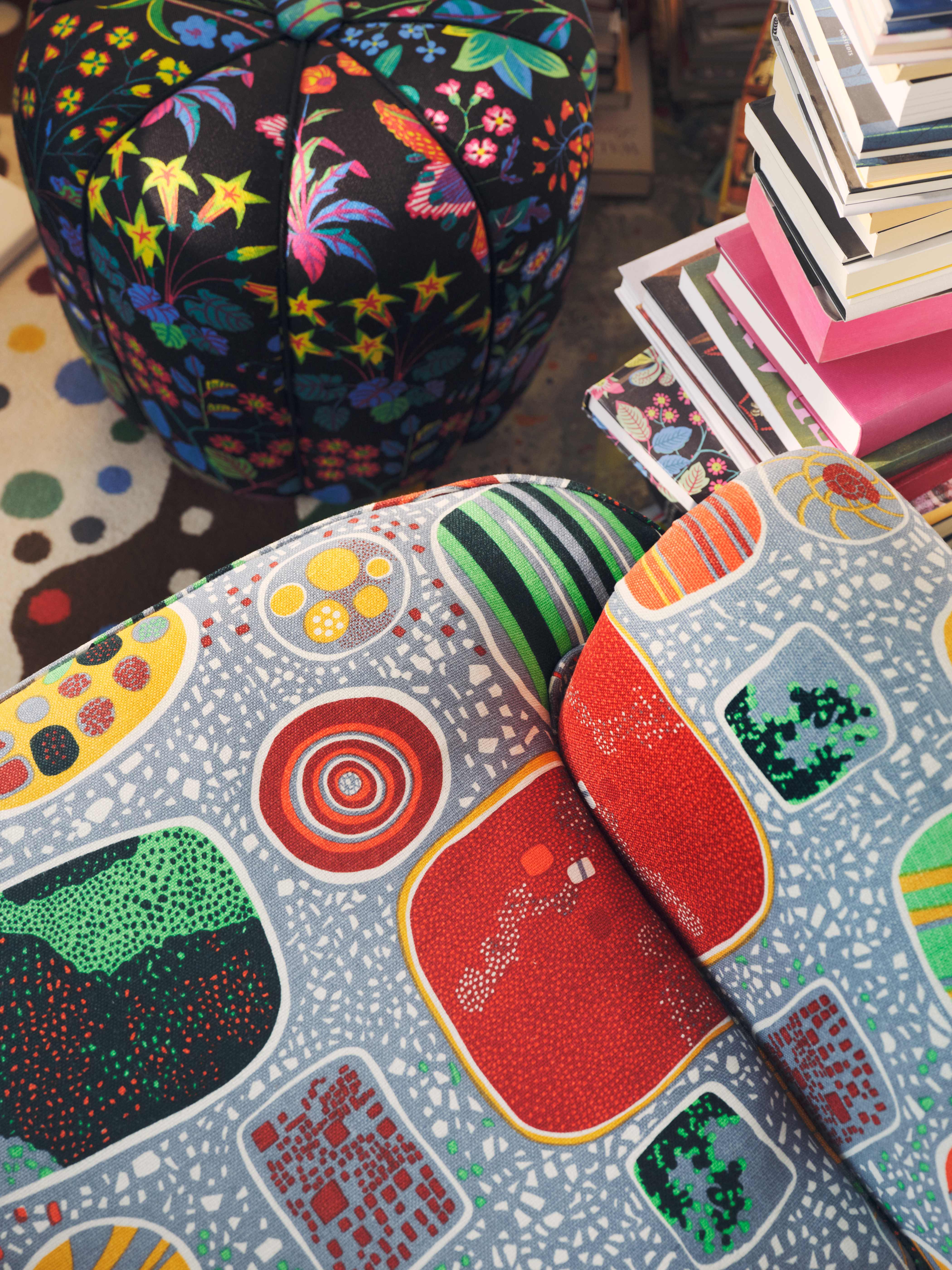Frej Lonnfors’ shrink pots
Shrink pots with geometric patterns
Frej Lonnfors happily finds inspiration in popular culture. His shrink pots are often covered with decorative, vibrant patterns carefully cut out with a knife. The patterns on the ten pots he created for Svenskt Tenn are geometric and based on the principles he has developed over many years of craftmanship.
“Many people think that it is the carved lines that make up the pattern itself, but the uncut surfaces are equally important. It is in the interplay between the surfaces and the light that falls on them that everything comes into place.”
The shrink pots are handcrafted and carved by woodworker Frej Lonnfors in Västra Ämtervik in Värmland, Sweden.
Outstanding craftsmanship
To create a shrink pot, the wood must be fresh. Frej fells the birch himself, cuts it up into lengths and stores it outside the workshop. By carving one pot at a time, he avoids excessive drying and cracking. Inside the workshop the craft begins to take shape, as three holes are drilled into the wood. Then the outside of the pot is shaped with an axe and carving knife, and the inside is cut out and cut clean with a gouge.
The base of the pot is carefully shaped. By following the contour of the pot with a pencil, Frej can achieve an exact fit. The material is sawn out with a traditional “grindsåg” saw and the edges are carved clean with a band knife. With a self-made tool he carves out the so-called knot inside the pot. The bottom is fitted to this groove and then the pot is placed on a shelf to dry and shrink so that its walls close in tightly onto the base.
“There is something deeply satisfying when shaping the body of the pot. It’s a hollow vessel that you can present and look at but also hold in your hands.”
Then there is a long period of waiting while the pots dry and shrink and that time is filled with excitement and anticipation.
“It’s impossible to fully know how the different elements will behave during the process. Some birch wood turns a little when drying which gives the pot a slight lengthwise twist. In other cases, the side of a square pot can fall in somewhat resulting in a slightly concave surface. From a craftsman’s perspective I welcome the variations and use them to the pot’s advantage.”

Frej Lonnfors“There is something deeply satisfying when shaping the body of the pot. It’s a hollow vessel that you can present and look at but also hold in your hands.”
After a few months, the pot has dried and shrunk to its final shape. Then it’s time to make the lid. It is a meticulous process in which a simple technique using flour helps to mark where the seam should be cut. After the lid has been formed and thinned down by carving out the inside, the work is completed using a carving knife.
“I’m constantly chasing the perfect contour of a lid and making small adjustments for every new one I make. Seen from the side, it needs to crown the pot properly. It can’t be too flat, nor too curved so it looks like it could fall off the jar.”
Perhaps the most artistic part begins once the pot is finished – the pattern cutting. Frej describes it as a physical process, in which the whole body is engaged in creating the detailed geometric patterns. The cuts are not only decorative, but they also interact with light and shadows to create a playful effect on the surface.

Frej Lonnfors“Sometimes I toy with the idea that the pots standing there are like small temple buildings or reliquaries, ready to hold all sorts of secrets… or perhaps simply coffee.”
The final production step is painting. Linseed oil paint is used and through careful colour mixing, shades are created that bring the pot to life. Frej strives for simplicity, mixing no more than two colours to create purity of tone. The painting, which is reminiscent of the earlier work with the wood, is done methodically and with the same dedication as the rest of the process.
“I think a fascination with these objects is deeply rooted within us. Jars, boxes, urns and pots have been so important to us for so long, from the storing of food to the final resting place in the burial urn. Sometimes I toy with the idea that the pots standing there are like small temple buildings or reliquaries, ready to hold all sorts of secrets… or perhaps simply coffee.”
Frej Lonnfors sees each pot as a living part of the handicraft tradition. Whether it’s the slight variations in the shape of the wood or the subtle patterns that decorate the surface, it’s such details that give each shrink pot its unique character. For Frej, it’s not imperative to have perfection, but rather a harmony between the unpredictability of nature and the woodworker’s skill. Old meets new in every pot and the result is an object that is not only functional but also powerful and alive.




